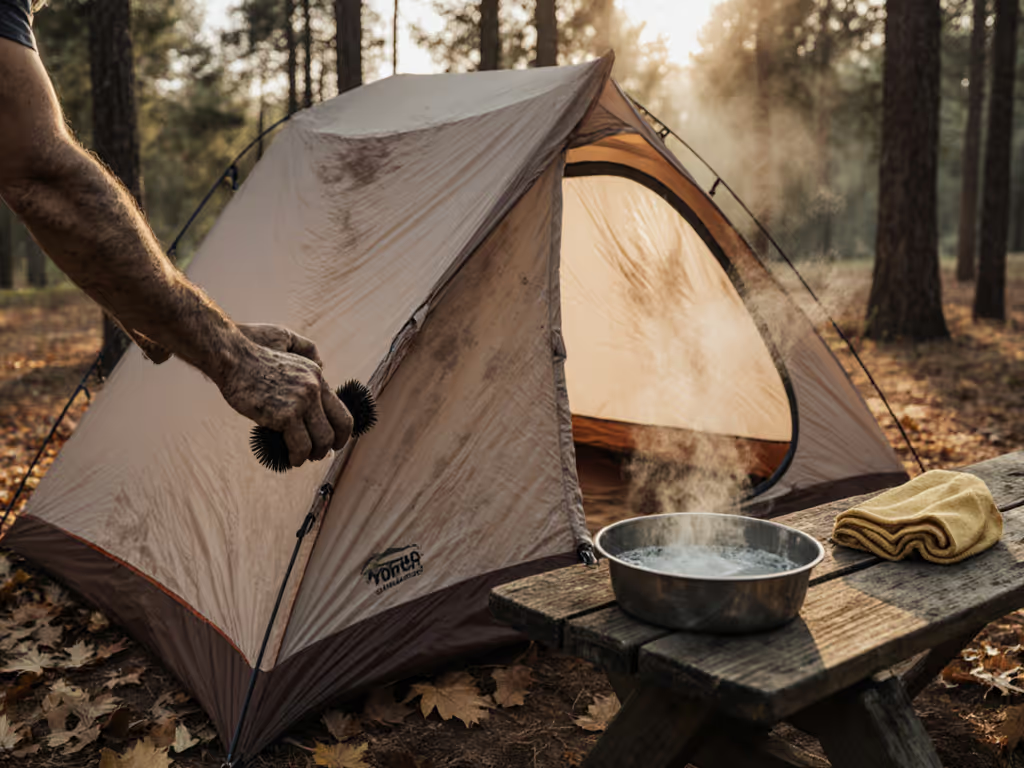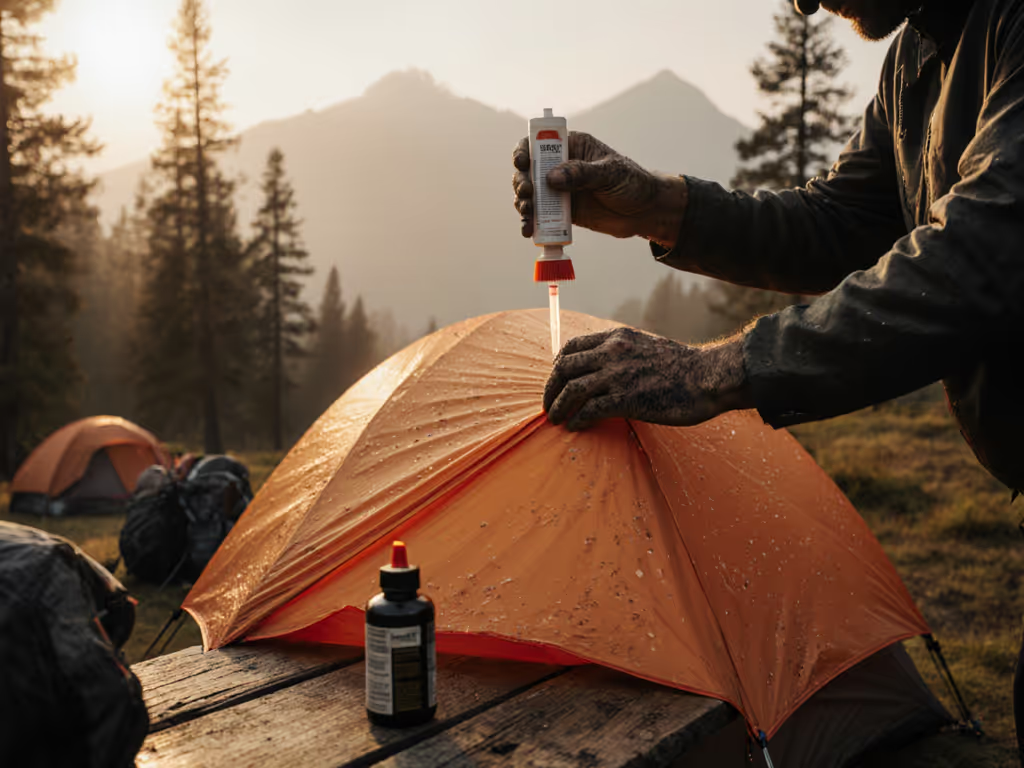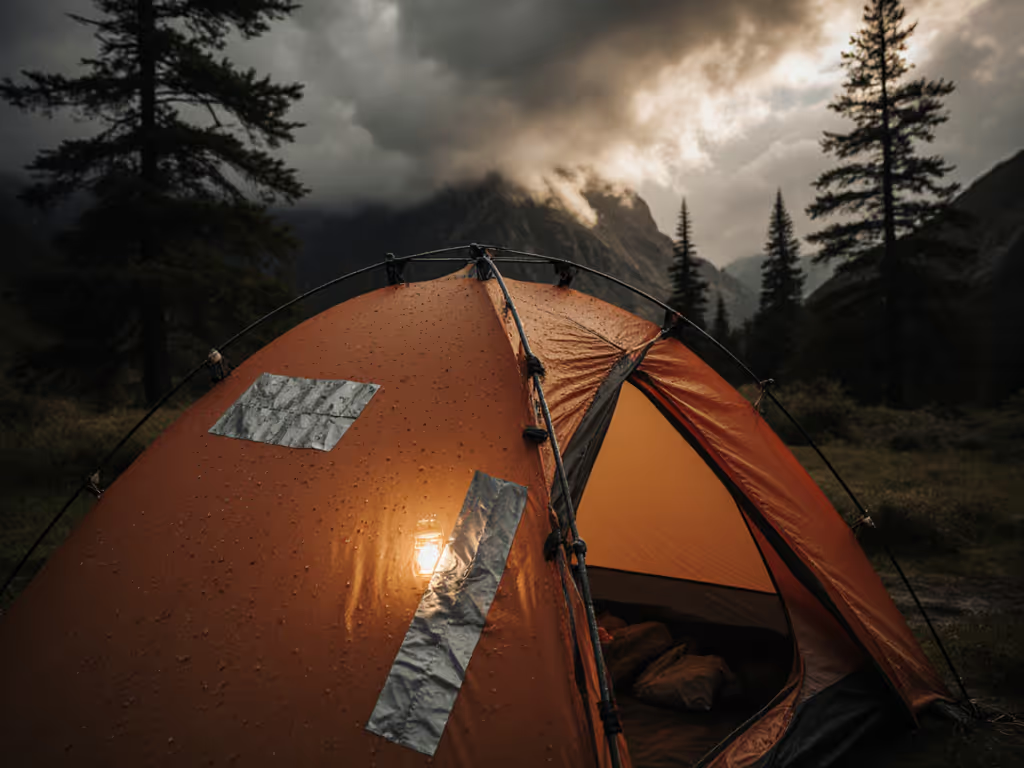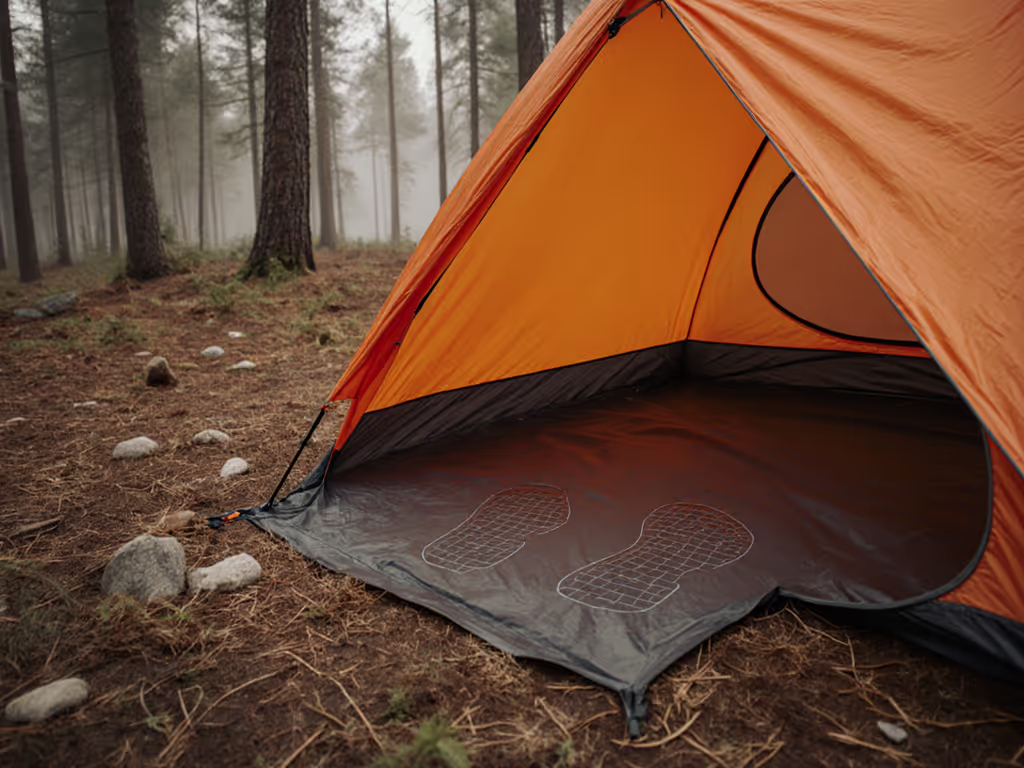
Your Ultimate Weather Ready Tents Checklist: Stay Dry, Cool, and Comfortable in Any Season
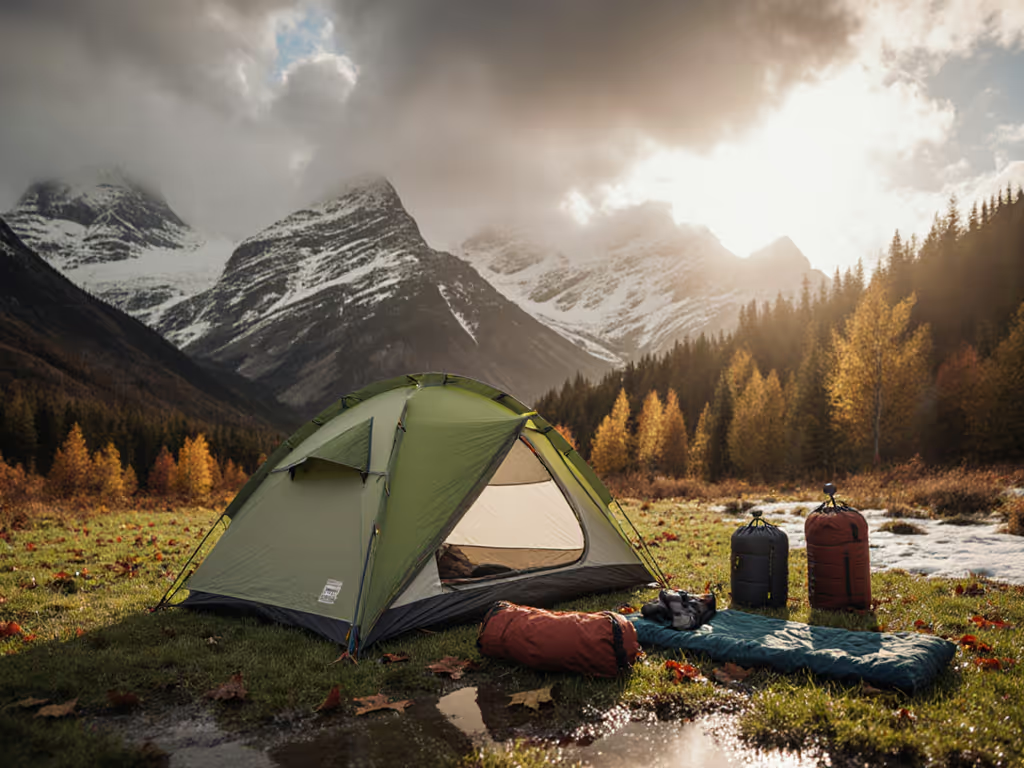
When storms roll in or heat shimmers off the ground, weather ready tents separate a restful night from a rough one. Your shelter should shed rain, stand firm in gusts, and breathe well enough to prevent clammy walls or sleepless nights. Yet the tent aisle can feel like alphabet soup and marketing hype. What actually matters for staying dry, cool, and comfortable in any season, and how do you choose confidently without overspending?
This guide translates technical specs into field-ready decisions, then turns those decisions into a simple checklist you can use when choosing or at camp. You will learn which fabric coatings last, how much waterproof rating you really need, and why airflow is as critical as rain protection. Along the way, we will highlight Sleep-Ready Tents insights, where real-world testing, evidence-based reviews, and practical buying guides help you match a tent to your style, climate, and comfort goals.
What Makes a Tent Weather Ready? Core Criteria That Matter
Think of your tent as a tiny home that must manage water, wind, heat, and condensation while staying easy to pitch. For water, look for canopies and flysheets with robust waterproof ratings, seam sealing, and smart drip lines that keep run-off away from doors. For wind, stability comes from an efficient pole geometry, adequate guy-out points, and stakes that actually hold in your soil type. To boost weather protection before you even pitch, use our campsite selection guide for wind breaks and drainage tips. For heat and humidity, large doors, cross-vent windows, and high-low vents help swap warm, moist air for cooler, drier air without inviting rain inside.
Comfort is more than dryness. A livable floor plan with tall-enough walls to sit upright, vestibules for wet gear, and easy door access all cut stress when conditions turn. Even small touches like reflective guylines and color-coded pole sleeves pay off in the dark or during squalls. According to common customer reports and reviewer observations, most tent “leaks” are actually condensation appearing as drips from the fly. That is why airflow design should be evaluated right alongside waterproofing.
Finally, fit the tent to your use. Weekend family campers may value quick setup and roomy interiors, while backpackers trade space for lower weight and wind-shedding shapes. Four-season designs add snow load strength and continuous pole sleeves, but they run warmer in summer. Instead of one tent to do everything, aim for one tent that does your most common conditions exceptionally well.
Weather Ready Tents Checklist: From Rainstorms to Heatwaves
Use this checklist when researching, shopping, or packing. It takes the guesswork out of choosing reliable weather ready tents and helps you verify key details before you leave home. Ask yourself: Does the fly extend far enough to protect doors and windows? Are there at least two vents positioned to enable crossflow even when fully closed to rain? Do the stakes and guylines match the terrain you expect, from sandy riverbars to hard-packed camp pads?
Watch This Helpful Video
To help you better understand weather ready tents, we've included this informative video from Canadian Prepper. It provides valuable insights and visual demonstrations that complement the written content.
- Rain defense: full-coverage flysheet, factory-taped seams, bathtub-style floor with raised edges, and a rain gutter or drip edge above doors.
- Wind stability: low, aerodynamic profile; ample guy-out points with reflective cord; sturdy stakes suited to soil; ridge or cross poles that resist twisting.
- Ventilation: opposing vents for cross-breeze; mesh panels protected by fly eaves; ability to vent at the peak and near the floor for high-low airflow.
- Heat control: light-colored fly to reflect sunlight; roll-back fly options; large doors for rapid air exchange; optional sunshade or tarp for mid-day respite.
- Cold readiness: reduced mesh in the inner canopy; solid fabric panels to block drafts; snow skirts on four-season models; strong pole architecture for load.
- Floor protection: footprint matched to the tent body; high-denier floor fabric; smart site selection to avoid depressions where water pools.
- Ease of setup: color-coded poles and clips; hubbed pole sets; clear orientation cues; practice runs at home to find the fastest sequence.
- Livability: two doors to reduce climbing over partners; vestibules sized for packs and boots; interior pockets and a lantern loop; quiet zippers.
Before you go, test-pitch the tent in your yard. Spray it with a hose to check for drips at seams, and practice guying until lines are snug and symmetrical. Pack spare stakes, an extra guyline, a small repair sleeve, and tape for field fixes. With the basics dialed, you are better prepared for the kind of weather that turns average trips into great stories.
Materials and Fabrics Explained: Waterproof Ratings, Breathability, and Durability
Different fabrics respond to rain, sun, and abrasion in distinct ways, and coatings determine how long that performance lasts. Modern polyester resists ultraviolet exposure better than standard nylon, so colors fade more slowly in high sun camps. Nylon can be lighter for the same strength and may stretch slightly under tension, which helps shed wind and snow. Canvas blends breathe well and dampen flapping noise but weigh substantially more and take longer to dry after extended rain.
Waterproof ratings tell you the pressure a fabric can resist before water penetrates. For lab-tested differences among polyester, nylon, canvas, and composites, see our tent fabric comparison with wind, rain, and longevity metrics. For three-season camping, many experienced reviewers consider around three thousand millimeters of hydrostatic head on the fly a reliable benchmark, while floors benefit from four to five thousand millimeters for abrasion and kneeling pressure. Durable water repellent finishes help water bead and roll off, maintaining breathability and reducing wet-out. However, durable water repellent finishes are sacrificial layers and eventually require gentle cleaning and reapplication to maintain performance.
Coatings vary. Polyurethane is common, cost-effective, and easy to seam tape, though some formulas can hydrolyze in long-term storage if packed wet. Silicone-impregnated nylons increase tear strength and longevity but are more expensive and require specialized seam construction. Ultralight composites based on ultra-high-molecular-weight polyethylene offer exceptional strength-to-weight and near-zero water absorption, though they are pricier and can be loud in wind. Use the table below to align material properties with your priorities.
Fabric and Coating Comparison for Weather Readiness
| Material | Typical Use | Waterproofing Approach | UV Resistance | Durability | Weight | Best For |
|---|---|---|---|---|---|---|
| Polyester | Flysheet, budget to mid-range | Polyurethane coating or silicone blend | Good | Good | Moderate | All-around camping, high sun areas |
| Nylon | Lightweight backpacking | Silicone on both sides or hybrid | Fair to good | Very good for weight | Light | Windy routes, weight-conscious trips |
| Canvas blend | Family and basecamp shelters | Wax or factory waterproof treatment | Very good | Excellent | Heavy | Four-season comfort, long stays |
| Ultra-high-molecular-weight polyethylene composite | Premium ultralight shelters | Non-porous composite layer | Excellent | Excellent tear strength | Ultralight | Long-distance backpacking in variable weather |
Sleep-Ready Tents publishes detailed fabric comparisons focused on rain resistance, wind stability, and long-term wear. We measure fly wet-out timing, track coating durability across repeated soaks and dries, and note any early signs of stickiness or peeling inside the fabric. Those data-backed reviews help you avoid the frustration of a tent that looks great on day one yet underperforms by season two. That way you choose on performance, not just product photos.
Ventilation and Condensation Control: Stay Dry and Comfortable
Why does a tent feel wet inside when it did not even rain? Get proven condensation fixes and ventilation techniques to keep interiors dry in all seasons. The culprit is condensation. Your breath and body vapor add several cups of moisture overnight, which collects on the coolest surfaces if air cannot flow. Well-placed vents, generous mesh in the inner canopy, and a fly that allows gap clearance at the base all work to keep interior humidity down. Equally important, door and vent shapes should be protected enough that you can leave them cracked during a drizzle.
Cross-ventilation is your best friend. Look for two or more vents on opposite sides, ideally at different heights to create a stack effect that pulls warm air up and out. If your campsite allows, orient a door or vent toward the prevailing breeze while keeping windward vents sheltered by the fly’s brim or eaves. Real-world customer return patterns suggest a majority of “leaking” tents in returns show no fabric failure; rather, moisture appears where breath hits a cold fly and drips back onto sleepers.
Airflow Features That Improve Comfort
| Feature | Why It Matters | Best Use Case |
|---|---|---|
| High-low vents | Drives stack effect for steady moisture removal | Humid forests, rainy shoulder seasons |
| Two large doors | Rapid air exchange, easy midnight exits | Warm climates and family camping |
| Fly brims or awnings | Let vents stay open during showers | Frequent drizzle, coastal camping |
| Inner canopy with mixed mesh and solid panels | Balances breeze and draft control | Variable conditions, three-season use |
Sleep-Ready Tents field-tests condensation-control strategies using controlled airflow trials. We time how quickly humidity drops after lights-out with different vent configurations and record whether drips form on the inner canopy by dawn. You can replicate similar habits in camp: crack both vents, create a finger-width fly gap, and keep wet gear in the vestibule. Small changes can transform a damp night into a dry, restful one.
Setup Speed and Structural Strength: Poles, Guying, and Real-World Stability
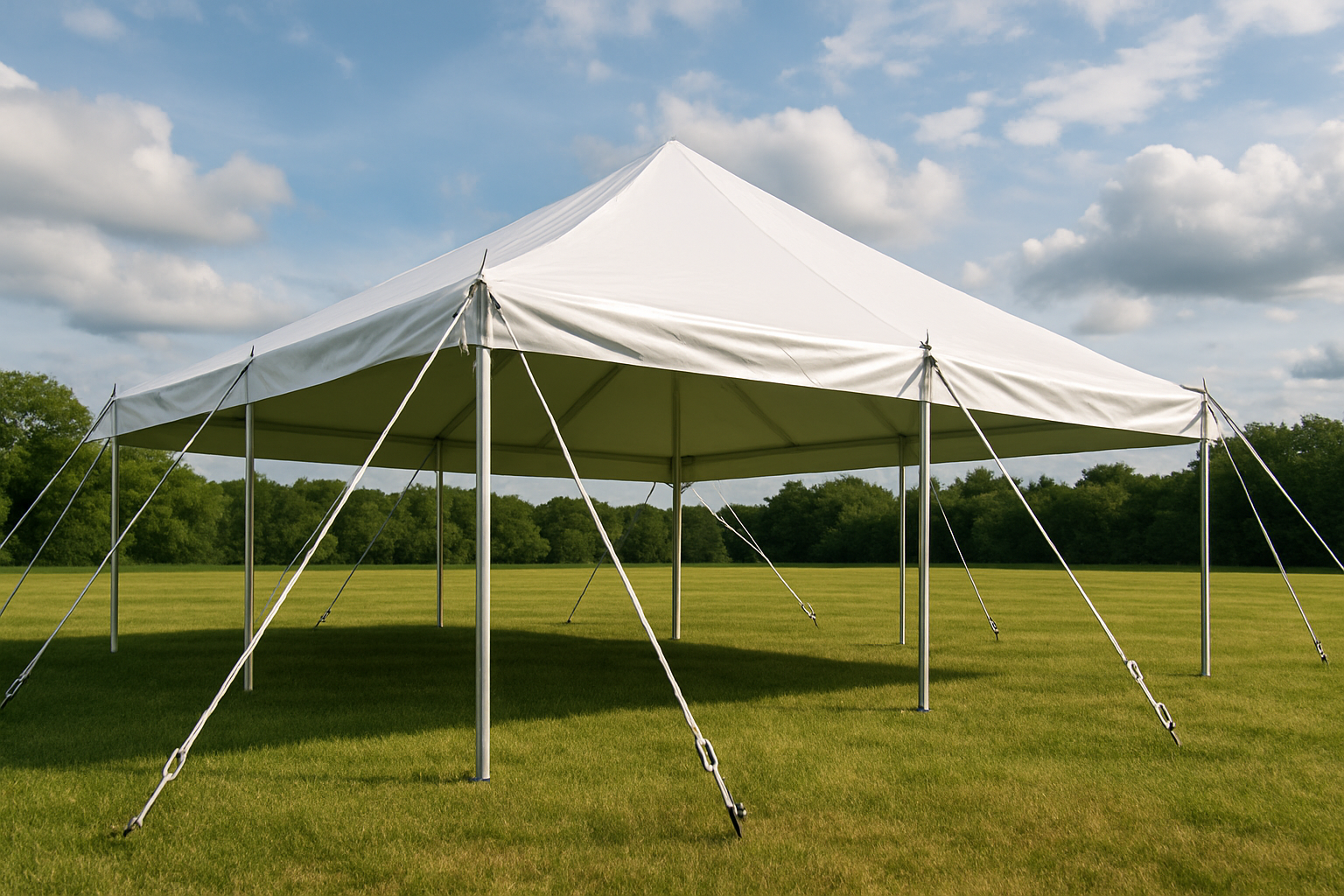
A storm does not wait while you puzzle over pole sleeves. Quick, intuitive pitching reduces errors and gets you protected faster. Freestanding domes clip together quickly and move easily for site tweaks, while semi-geodesic and tunnel designs can offer better wind shedding when properly guyed. Instant and pop-up designs trade some packed size complexity for speed; Sleep-Ready Tents evaluates these closely to identify which models achieve fast setup without sacrificing stability. See our instant and pop-up tent reviews to find fast-pitch shelters that still handle surprise squalls.
Strength comes from geometry and components working together. More crossing points in the pole structure reduce flex and spread loads, and pre-bent or ridge poles increase headroom without losing stability. Aluminum poles are the preferred choice for strength-to-weight, while fiberglass can be serviceable for budget campers who avoid high winds. Guyline anchors should align with major pole intersections, and stake types should match your soil, whether that is sandy beaches or rocky pads.
Pitching Styles and Use Cases
| Design | Setup Speed | Wind Performance | Best For | Notes |
|---|---|---|---|---|
| Freestanding dome | Fast | Good | General camping, mixed weather | Easy to move for site selection |
| Semi-geodesic | Moderate | Very good | Windy, alpine, shoulder seasons | More pole intersections reduce flex |
| Tunnel | Moderate | Excellent if well oriented | Coastal winds, bike touring | Requires proper wind alignment |
| Instant or pop-up | Very fast | Fair to good | Family weekends, fair weather with occasional squalls | Check guy-out options for storms |
Case study: A three-person dome, properly guyed with eight stakes and low-profile orientation, held firm through overnight gusts near forty-five miles per hour on an exposed ridge. The same model, pitched tall and without side guylines, collapsed inward during similar gusts a week later. Technique matters. Sleep-Ready Tents includes step-by-step guying diagrams and field videos so you can lock in storm-ready habits before weather turns.
Sizing, Layout, and Comfort: Sleep Quality and Livability
Space is weather protection too. When rain forces a twelve-hour tent day, knee room, headroom, and gear organization prevent cabin fever. For families, two doors reduce midnight acrobatics, and dual vestibules keep muddy shoes outside. Backpackers should check true interior lengths against tall sleepers and consider tapered floors that match mummy pads to save weight without squeezing shoulders.
Ceiling height, wall angle, and door shape all influence usability. Vertical or pre-bent poles add shoulder room without inflating footprint, while D-shaped doors unzip quietly and stash out of the way. Interior pockets corral headlamps and maps, and a ceiling loop holds a lantern for card games during showers. A footprint sized slightly smaller than the floor helps protect fabric while avoiding moisture channels beneath the tent in heavy rain.
Sleep-Ready Tents factors comfort metrics into every evidence-based review. We score real sleep quality on chilly nights, track zipper snags at two in the morning, and time average entry and exit during rain. That lens catches whether a tent is livable beyond show-floor demos. Because comfort you can count on is what determines whether a rough forecast cuts your trip short or becomes an easy story later.
Smart Buying With Data: How Sleep-Ready Tents Guides Your Choice
The tent market is crowded, and spec sheets can be inconsistent or incomplete. Sleep-Ready Tents collects measurements the same way across all models, then shares results plainly: true floor dimensions, verified waterproof ratings after multiple soaks, vent throughput tests, and sustained wind performance using consistent guying. You get apples-to-apples comparisons that reveal hidden strengths and weaknesses. For example, two tents with similar waterproof numbers may diverge in practice if one wets out faster or channels run-off toward the door seam.
We also separate needs by use case so you do not overspend. Family weekenders might choose a roomier polyester dome with robust ventilation and simple hubs, while shoulder-season trekkers could prioritize silicone-coated nylon with extra guy points and a stormworthy vestibule. Eco-minded campers get options made with recycled fabrics and low-impact coatings that still stand up to rough weather. And if fast setup is your pain point, our instant and pop-up evaluations highlight which models you can pitch before the first drops hit.
Beyond reviews, our buying guides teach skills that maximize any tent’s potential. You will learn how to select a wind-aware site, how to angle stakes for different soils, and how to maintain waterproof coatings with gentle cleaning. By focusing on clear, evidence-based insights, we help you move from uncertainty to confidence long before clouds stack on the horizon.
Quick Reference: Weather Ready Tents Feature Matrix
Use this matrix to align features with the conditions you expect. Match your top two environments, then shortlist models that meet both sets of demands. It is a fast path from broad browsing to a focused, confident pick.
Feature Matrix by Weather Scenario
| Condition | Essential Features | Good-to-Have Extras | Common Pitfalls |
|---|---|---|---|
| Heavy rain | Full fly coverage, taped seams, bathtub floor, protected vents | Drip edge over doors, large vestibules for wet gear | Short flysheets, mesh-only inners without solid panels |
| High wind | Crossing pole geometry, ample guy points, strong stakes | Low profile shape, pre-bent ridge pole for strength | Poor guying technique, tall vertical walls facing wind |
| Heat and sun | Large doors, opposing vents, light fly color | Roll-back fly options, extra shade tarp | Minimal vents, dark fly that absorbs heat |
| Cold shoulder seasons | Mixed inner canopy panels, fewer mesh zones, solid fly | Snow-flap skirts, stronger poles | Excess mesh causing drafts |
| Family comfort | Two doors, tall interior, multiple pockets | Room divider, color-coded setup | Single door forcing midnight climbing |
Pro tip: many campers size up by one person for comfort and rainy-day gear sprawl. If weight is not critical, a three-person model for two sleepers increases elbow room, improves airflow, and reduces bumps that dislodge stakes overnight. Small upgrades like that have outsized impact on rest, especially when weather tests your patience.
Putting It Together: A Real-World Scenario
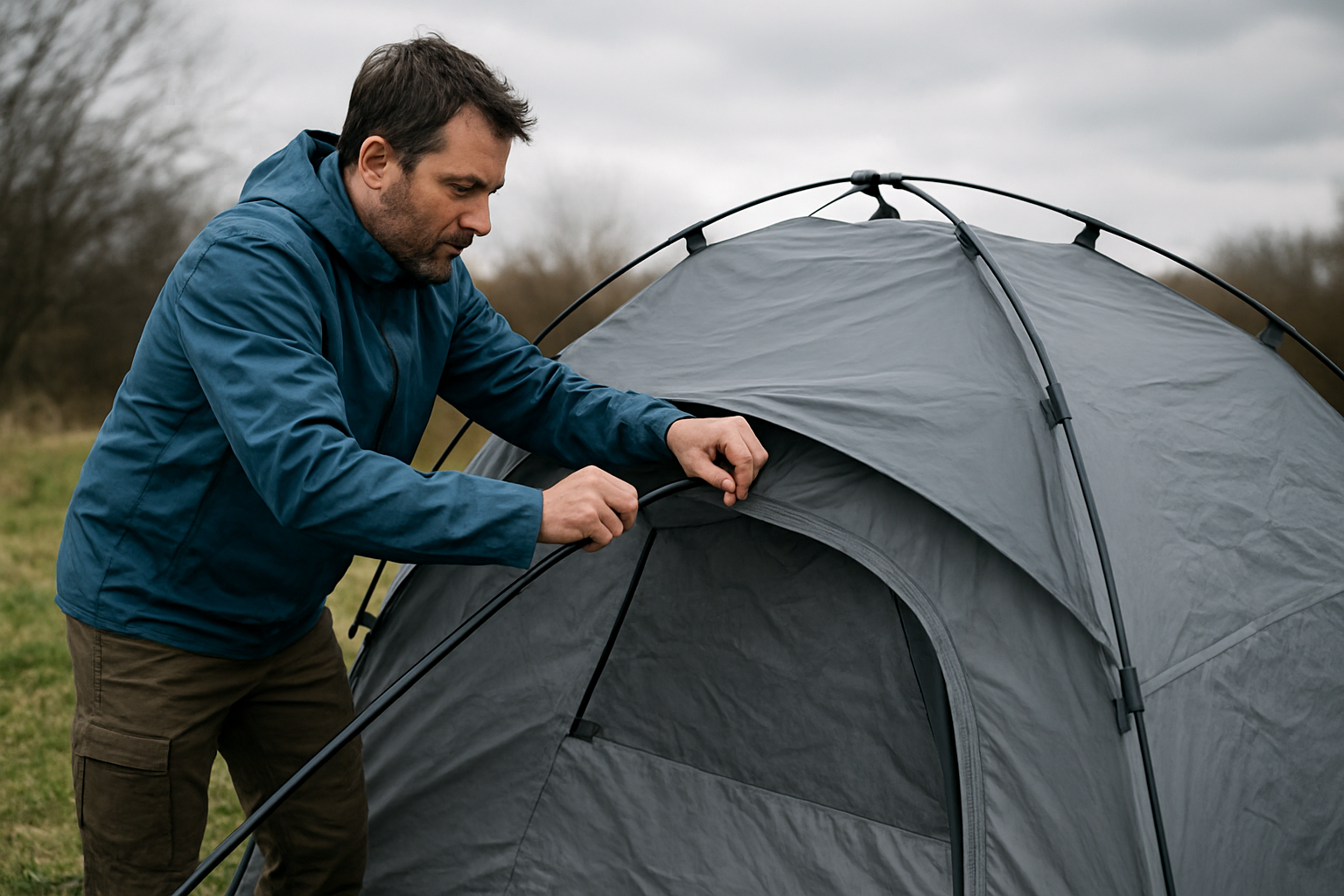
Imagine a coastal weekend with rain in the forecast and brisk onshore winds. You select a low-profile dome with verified rain protection, then orient the narrow end toward the breeze. Two high-low vents stay open under the fly’s brows, and you anchor all guy points with Y-stakes suited to sandy soil. Wet boots and jackets live in the vestibule, and the inner canopy’s solid panels prevent drafts over your sleeping bags.
Mid-trip, temperatures jump and the clouds break. The fly rolls back halfway to expose mesh doors while still shading the living space. A light-colored fly reflects the afternoon rays, and your interior stays comfortable enough for a nap. That ability to adapt from storm to heat without swapping shelters is the hallmark of a well-chosen tent.
Sleep-Ready Tents road-tests the exact scenarios readers face. Our evidence-based tent reviews and buying guides compare waterproof performance after repeated soak cycles, measure wind deflection using consistent guying, and grade ventilation by humidity reduction overnight. With those data and clear how-to steps, you can pack fewer doubts and more confidence next time the forecast turns complicated.
Maintenance That Extends Weather Readiness
Even the best materials degrade with neglect or hard use. After each trip, let your tent dry fully before storage to protect coatings and prevent mildew stink. Clean with lukewarm water and a gentle, non-detergent soap, then rinse thoroughly. Follow our step-by-step tent cleaning guide to preserve coatings and prevent seam tape failure. Avoid harsh cleaners that strip durable water repellents or attack seam tape adhesives. When the fly stops beading water, apply a compatible durable water repellent treatment and refresh seam sealant if needed.
Inspect stress points. Look for wear at pole tips, guy loops, and corners where fabric sees concentrated forces. Replace bent stakes and retire frayed guylines before they fail under load. Store loosely in a breathable bag in a cool, dry place to prevent heat-related coating breakdown. Simple habits like these extend functional life and keep performance close to new for many seasons.
Sleep-Ready Tents includes maintenance checklists in our guides, plus troubleshooting steps for common issues like zipper grit, pinhole leaks, and sticky coatings. We also flag models that respond well to reproofing compared with those that tend to peel or flake under treatment. That way you know not only what to buy, but how to keep it performing at its best.
A Data-Backed Shortlist Strategy
Ready to shop efficiently? Start with your top two conditions, then shortlist three models that meet those needs on paper. Next, verify the details that are hardest to judge from marketing copy: true fly coverage, vent usability in rain, pole intersection count, and stake quality. Sleep-Ready Tents condenses this due diligence into quick-read comparison tables so you do not have to hunt through scattered spec sheets.
From there, check field notes focused on comfort: door shapes, zipper paths that avoid floor dust, vestibule depth for cooking in a pinch, and pocket layouts that keep essentials handy. If setup speed matters, look for hubbed poles and clear orientation cues, especially for family tents where simplicity reduces stress on arrival. Finally, read long-term test results to see how coatings and fabrics age after repeated wet-dry cycles. Confidence grows when lab numbers match trail behavior.
With a shortlist grounded in verified data, you can focus on the intangibles that make a tent feel like home. The result is a shelter that you trust in a downpour, enjoy under a blazing sun, and count on for many seasons without second-guessing your choice. That is the practical path to truly weather ready tents.
Key Takeaway: Combine honest fabric knowledge, smart airflow, stable geometry, and disciplined setup technique. Then peak at real test data to validate what marketing claims cannot show. That process is exactly what Sleep-Ready Tents exists to make easy, turning confusing choices into a clear, comfortable pick you will look forward to pitching.
Frequently Asked Decisions: Quick Answers
How waterproof is “waterproof”? For most three-season campers, about three thousand millimeters on the fly and four to five thousand millimeters on the floor are comfortable targets. Do you need four-season? If you face sustained snow load or frigid winds, yes. Otherwise, a strong three-season model with thoughtful guying covers most trips. Are instant and pop-up tents reliable? The best ones are fast, and when they include generous guy points and full-coverage flysheets, they can handle surprise squalls very well.
What about eco-friendly options? Recycled polyester and solution-dyed fabrics reduce dye water use and resist fading while still offering solid weather performance. Look for models that balance sustainability with storm readiness instead of trading one for the other. Sleep-Ready Tents highlights eco picks that we have verified in real rain and wind, not just in press releases.
Which upgrade is most underrated? Better stakes. Swapping basic wire pegs for stronger Y or V profiles drastically improves holding power in varied soils. Pair that with reflective guylines and you are less likely to trip on lines at night and more likely to wake up to a tent that still looks expertly pitched in the morning.
You now have a practical, field-tested framework to choose and use a tent that thrives in bad weather and breathes in good weather, all while keeping setup simple. Sleep-Ready Tents provides the data and guides to make that framework effortless.
Weather ready tents work when all the details work together. Pick a reliable fabric and coating, ensure the fly truly shields the tent, give air a way to move even in rain, and anchor the structure with strong geometry and proper guying. Maintain the fabric and hardware, then practice your pitch until it is second nature. With a little planning and data-backed selection, you will sleep dry, cool, and comfortable in nearly any season.
Conclusion
Here is the promise fulfilled: a clear, proven checklist that turns confusing tent specs into confident, weather-ready decisions.
Imagine opening your tent to fresh air after a night of hard rain, coffee steaming, and no damp gear in sight. In the next 12 months, your kit can feel lighter, stronger, and smarter simply by aligning fabric, airflow, and structure with your trips.
What would your next stormy weekend look like if your shelter felt as solid and breathable as a cabin, and what will you do with the extra comfort and energy it gives you?
Additional Resources
Explore these authoritative resources to dive deeper into weather ready tents.
Choose Weather Ready Tents with Sleep-Ready Tents Guidance
For outdoor enthusiasts and family campers, Sleep-Ready Tents offers data-backed reviews, guides, and comparisons to help you choose tents that suit your style, handle weather, and boost comfort.

